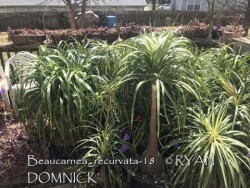
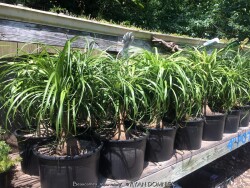
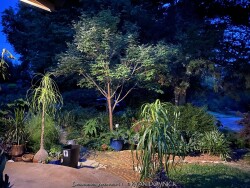


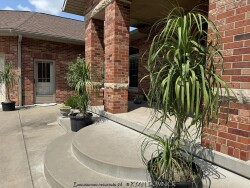
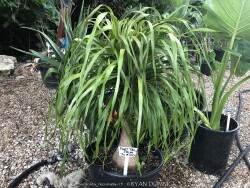





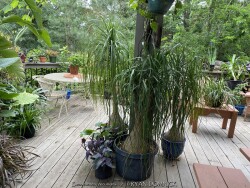
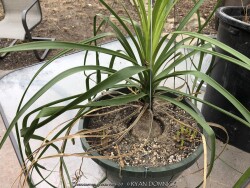
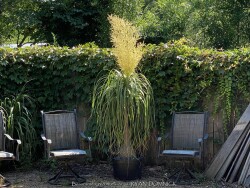
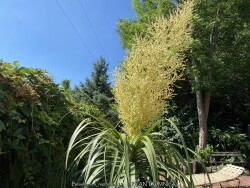
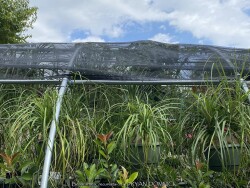
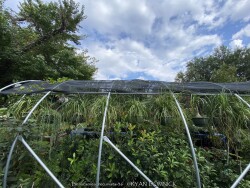

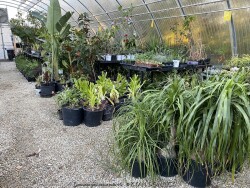

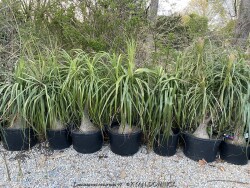
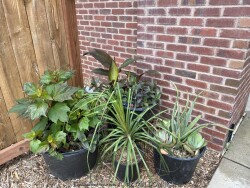
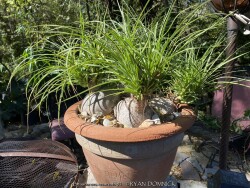
Plant Min Zone: 9b
Plant Max Zone: 11b
Sunlight: All Day Full Sun, Full Sun, Part Sun
Water / Rainfall: Low, Average
Soil Quality: Poor, Average
Bloom Season: None
Flower Color: None
Berry / Fruit Color: None
Spring Foliage Color: Green
Summer Foliage Color: Green
Fall Foliage Color: Green
Evergreen Foliage: Yes
Winter Interest: Yes
Scented Flowers: No
Drought Tolerance: High
Wet-Feet Tolerance: Low
Humidity Tolerance: Low, Medium, High
Wind Tolerance: High
Poor Soil Tolerance: Rocky Soils, Sandy Soils, Shallow Soils
Height: 2' - 6'
Width: 1' - 2'
Growth Rate: Slow
Service Life: N.A.
Maintenance Need: N.A.
Spreading Potential: N.A.
Yearly Trimming Tips: N.A.
Plant Grouping Size: N.A.
Best Side of House: N.A.
Extreme Planting Locations: N.A.
Ornamental Features: N.A.
Special Landscape Uses: N.A.
Possible Pest Problems: N.A.
Plant Limitations: N.A.
Shippable in 2026: YES
Ponytail Palm / Elephant's Foot (Beaucarnea recurvata) has a pronounced swollen caudex (trunk) and attractive green grass-like curved foliage making an excellent architectural statement. Ponytail Palm (not a true palm) is native to low deciduous forests and semi-desert areas of southeastern Mexico, Belize and Guatemala where it typically grows to as much as 30' tall. It is best used as a houseplant or summer patio plant in Kansas. Place in full sun to part sun with optional extra watering including that which comes from rainfall. Repotting may or may not be needed depending on how large you want the plant to grow; plants can continue to grow taller and tolerate extremely root-bound pots but may need wind bracing. in Potted plants are hardy to at least 25 degrees F for a short time if kept dry so you are ok if you miss the first light frost. Do not allow the pot with rootball to freeze solid though. Move into a cold garage, basement, or bright window over the winter with occasional to no watering. Larger ponytail palms can survive 6-8 months without water in the winter if allowed to have a healthy outdoor growing season. As a winter house plant, it will look presentable all winter long with just a couple waterings.(also to prevent lanky winter growth) As a permanent house plant, provide bright light and allow the soil to dry between waterings for many years (even decades) of carefree enjoyment. Potted plants grow very slow and are very low maintenance needing only old leaves trimmed once per year. Mealy bugs can be a problem with permanent indoor house plants but will go away if grown outside during the summer or never introduced in the first place. Either way, sharp blasts of hose water and/or horticultural oil spray will mostly eliminate this (only) pest problem.